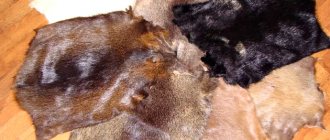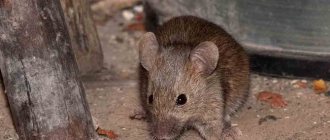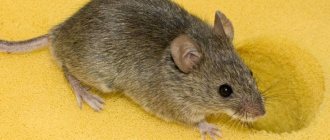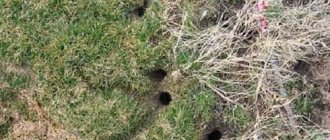Rabbits are extremely shy animals. This character trait is inherent in their genetics. And if the pet runs away, it will be extremely difficult to catch it. The task becomes even more complicated when the owners of such a fugitive have their own private house with a garden area. In this case, catching a rabbit in the garden or in the garden may be a completely impossible task for an inexperienced owner. What can we say about the capture of wild representatives of the family that accidentally got lost in the territory.
Rabbit in the garden
How to catch a runaway rabbit?
First of all, when catching a furry fugitive, you should not rush. In most cases, the rabbit runs away because it is scared of something, and fussy behavior, sudden movements and chasing the animal can make it even more nervous. Then, in attempts to escape, the pet may run off the territory or seriously injure itself while intending to do so.
In any case, you first need to observe the behavior of your pet for some time. If the living creature is frightened, then this will be evidenced by the following behavioral features:
- the body is pressed tightly to the ground;
- the rabbit practically does not move;
- ears almost lie on the back;
- the animal may frequently strike the ground with its hind limbs.
The last sign indicates that the animal is ready to take off at any second.
When recording one or more signs of fear in living creatures, it is advisable to immediately determine what caused this condition. Rabbits can be frightened by unusual sounds, smells, or new pets in the house. In order for the animal to calm down a little, if possible, the cause of the fear should be removed.
If such an action leads to the expected result, you can try to get closer to the baby. This must be done taking into account the following points:
- You need to approach the rabbit as slowly, smoothly and always on your haunches as possible. A large spot hanging from above reflexively causes fear in it, and the animal can escape.
- It is also advisable to talk to your pet while moving. At the same time, this must be done without stopping and as gently as possible.
- When you are completely close, it is worth trying to take the animal. To do this, you need to smoothly bring your hand from the side, and not from above. The animal should be handled firmly, but gently.
Important! If the fugitive is in sight, you can try to lure him closer with your favorite treat. Living creatures are extremely partial to such temptation and can even overcome their fear.
A bath towel will come in handy when catching a rabbit.
A bath towel can also help in its capture; you can use it to cover the rodent at the right moment.
In cases where the rabbit is not visible, you should inspect all the smallest cracks in the house, accumulations of papers, clothes, and cabinets. Most often, when there is danger, such animals hide in secluded places and calmly wait it out. Therefore, a thorough examination will quickly identify the baby.
Also, in order to simplify the possible process of capture, it is necessary to teach the pet to follow the owner’s voice from the first days of the pet’s stay with the new owner.
Sleeping pills
All of the above methods will help us catch the animal alive, however, they can at the same time injure the poor animal, not to mention the fact that the animal will experience enormous stress trying to get out of our traps
It is important for us to make sure that we can continue to breed pheasants or rabbits that we have caught. Therefore, it is best to catch animals using sleeping pills - this is the most humane way of hunting
You can purchase this drug at almost any pet store. Sleeping pills are usually mixed with food and scattered in the area where the animal lives. Modern drugs act quickly enough, so the animal or bird does not have time to get scared. However, the hunter should hurry, as the effect of the sleeping pill will end in a few hours.
Modern sleeping pills for animals are made from safe substances, so their use will not in any way affect their health. A person will also be able to consume the meat of this animal in the future if he wants, it is completely safe.
How to catch a rabbit in the garden or garden?
Things are different if you need to catch a wild rabbit in the garden, which has been gnawing trees and shrubs for a long time. To do this as efficiently as possible and without harm to the rodent, you must adhere to the following rules:
- For a certain period of time, it is worth observing the living creatures, noticing where the pests come from and where they are hiding. Traces of movements will also help with this.
- After identifying the main trails and places of greatest rabbit activity, traps are installed. You can make them yourself or buy them in a store. The trap should be installed in those places where the greatest number of traces can be traced.
- Vegetables and other delicacies can be used as bait. They need to be placed in the trap itself, in front of it and after it. For it to work effectively, food must be constantly added, and 1-2 times a day you need to check whether a rabbit is caught.
- If such an undertaking does not produce results within a week, the traps must be moved to another place with high animal activity.
Important! It is recommended to release the caught animal outside the populated area or in other places where it cannot cause harm to the garden.
Features of pre-processing of trap loops
It is worth understanding that copper wire, horse hair, nylon thread, etc. – materials are of low strength, and a hare can chew them very easily. That’s why hunters choose the most reliable material – steel.
As a rule, steel wire with a thickness of 0.5 mm is selected for the loop, which can withstand a weight of up to 25 kg. You can find such wire by disassembling clutch cables and old telephone cables. The main thing is to remove the insulation from the wire. If the wire is very thin, you should not throw it away - you can twist the product in half.
After cleaning the product from dirt and rust, you need to cut it to a length of at least 1 m and throw it into the fire for firing - this will make the wire softer and it will be easier to deform, taking the shape needed to make a loop.
To remove the burning smell, which will scare away animals, it is necessary to boil the wire in a container with grass and tree bark found in the area where the hunt will take place.
To completely get rid of an unpleasant odor, you need to add pine branches or pine needles to boiling water - the tree resin will quickly begin to envelop the wire, and after half an hour it will completely remove all unpleasant odors.
Then the wire should be placed in a clean bag and should not be brought into the living room. And you only need to set the trap while wearing clean gloves. If there are none, you can boil old mittens in a container with pine needles.
Catching wild rabbits
It is worth noting that in the process of catching wild rabbits you cannot do without a well-made trap. The simplest options in this regard are using snares and a wolf pit.
Hunting a wild rabbit
A standard snare is made of durable brass wire. In the lower part it is folded into a tightening loop, and the upper part is tied to the trunk of a tree or a powerful branch. The following points are taken into account:
- The loop must be placed in natural arches (snags, young trees with branches, intersections of large shrub trunks) located on rabbit trails.
- If there are no natural arches, you can carefully trim the branches of an ordinary tree, making such an obstacle yourself. To install the snare, it is enough to cut off 30 cm.
- The loop should be located at a height of 10-15 cm from the ground.
- It is better to carefully place some branches on the sides of the path to prevent the possibility of walking around.
It’s even easier to make another rabbit trap with your own hands. The wolf pit is made as follows:
- In places of increased activity of animals or on well-defined trails, dig a hole 0.5 m deep and the same width (for reliability, it can be deepened).
- Place several branches on top of the recess with a length slightly exceeding the width of the hole.
- Brushwood is laid out across the branches. It is necessary to take only small branches.
- The third layer is laid out with fallen leaves and dirt. At the same time, it is necessary to strive for the most naturalness of such disguise.
- Bait can increase the effectiveness of a trap. It is placed on brushwood exactly in the center of the recess. Carrots, vegetables or corn cobs are used as bait.
Attention! When installing snares and wolf pits, do not check them or adjust them too often. During such procedures, a human smell may remain, which will alert and scare away the animals.
Catching a pet or wild rabbits requires some skill. But in any case, these points will significantly increase the chances of success. Moreover, the skills of catching wild rabbits can also be useful if you plan to breed such animals at home. Today this is a fairly profitable area of livestock farming.
Useful tips
To successfully catch domestic escapees or wild rabbits and hares, the following recommendations will be useful:
- When approaching a caught animal, they move quietly and slowly, without jerking.
- When placing the bait, it is not recommended to touch it with bare hands. Wild animals have an excellent sense of smell, and a foreign smell will scare off a rabbit.
- To prevent escapes of domestic animals, you need to visit and count your pets more often.
- If attempts to catch the animal are unsuccessful, you can resort to the help of special services that have the appropriate tools.
Catching a rabbit is not an easy task. But using dexterity and simple devices created with your own hands, it is quite possible to do this.
How to catch an escaped pet rabbit
Often, even socialized pets, sensing the smell of freedom, can run away from the owner, refusing to return to the cage. At the same time, many of them will run away from the owner, as soon as he approaches. In order for the operation to capture the fugitive to be successful, it is important to accurately recognize all the features of the big-eared behavior that signal his intentions. These signals primarily include the following:
- knocking with its hind legs on the floor - the rabbit is ready to take off and run at any time;
- standing on its hind legs and pointed ears - the animal is listening, it is interested in something;
- pressing tightly to the surface - the animal is very scared, especially if it heard unfamiliar loud sounds.
The rabbit stands on its hind legs and has pointed ears - one of the signals of escape from the owner. Of all the listed behavioral features, the most favorable for capture is the last one, since sometimes the fear is so strong that it literally paralyzes your pet, immobilizing it for a time sufficient to to grab him.
It is good if the owner trains the pet to respond to his call in advance. In this case, there will be no difficulties in catching, you just have to call your pet and offer him a tasty treat. For this reason, the animals willingly leave the playgrounds and return to the cage.
The unnoticed escape of a pet, when the owner simply did not have time to notice where he had gone, can complicate the situation. In this case, first you need to inspect all nearby crevices and secluded places, especially in the area where he was last seen. Having approached the animal as much as possible, all that remains is to gently, without unnecessary movements, grab it by the skin and carry it into the cage.
If your search is unsuccessful, you can leave a self-closing cage in the room with your rabbit’s favorite treat inside: he will definitely climb into it as soon as he gets hungry.
Mordants
How to get rid of magpies and other feathered crop plunderers at your dacha? You just need to make sure that the birds lose interest in the food growing on the site. Special preparations are sold, after treatment with which the fruits lose their taste, but only for birds, and not for people and other animals. You need to treat berries, vegetables and fruits, as well as grass on lawns.
This method will also appeal to those who keep ducks and geese, but try not to let them graze on the property, as they are afraid that the birds will harm the harvest. Mordants are absolutely safe for the health and life of both people and animals, including birds.
How to catch a rabbit in the garden
If catching a rabbit in the house is quite difficult, it is even more difficult in the garden, where he has many escape routes. This is especially true for animals kept in cages on the territory, which may well accidentally jump out of there. Sometimes it happens that you may lose sight of them for a while, so all actions should be performed in the following sequence:
- Assess the situation and determine the hiding place of the long-eared fugitive (this could be bushes or dense thickets of a garden, for example, corn).
- In places where a large number of traces accumulate, place traps, the trigger of which will be as close as possible to the door (this will allow you to slam the cage as soon as the animal gets inside).
- You can bring the rabbit to the set trap with the help of food, which needs to be laid out in the place where the largest number of traces are accumulated (naturally, you need to pour treats into the cage itself).
You can check the trap 1-2 times a day, and during this time it is usually possible to catch a domestic fugitive. If we are talking about wild animals, it will take more time to catch in this way; If the trap remains empty during the week, it means you will have to move it to another place. Caught wild animals are taken away, to a place where they cannot harm cultivated crops and trees.
Choosing a location for a rabbitry and cage designs
Before purchasing rabbits, you need to prepare a place for them to live. A rabbitry can be set up both outdoors and indoors. Many rabbit breeders claim that keeping rabbits in cages in the fresh air is even better - the animals gain weight faster and their skin is of better quality. When choosing a site for a mini-farm, you need to meet some conditions:
- Rabbits do not like dampness, so cages should be installed away from bodies of water, on a hill.
- The cage should not be exposed to direct sunlight. Animals do not tolerate heat very well, so it is better if there is a canopy or shade from trees.
- There should be no drafts.
If the rabbitry is located in some room (for example, a barn), then it is important that it is ventilated and there is lighting for at least 10 hours in winter. The contents can be combined - kept in the air in the summer, and brought into the barn for the winter.
Important!
Cages should always be placed on supports higher from the ground. This will protect the rabbits' home from rats, dogs and foxes.
One cell is not enough; separate ones are needed:
- For a pregnant rabbit, where she brings baby rabbits, she feeds them for at least 1 month.
- For the male. Sometimes males fight and each one needs to be kept in a separate cage.
- For young animals. Young rabbits are kept in group cages.
Cell sizes can vary greatly depending on the breed of animal. For example, for a decorative rabbit you can build a home on a balcony measuring 60x40x35 cm. For an adult gray giant, a cage of 100x70x60 is needed. In such a dwelling you can also keep older rabbits - up to four individuals. Below are the sizes of cells for various purposes:
You can combine and arrange cells as you like. A common variant is a complex of two cages, with a nursery serving as a partition between them for storing solid food. There are also options for multi-tiered cages. Detailed drawings with step-by-step instructions on how to manufacture can be found on the Internet.
When breeding rabbits on an industrial scale, cages are made of a metal frame covered with mesh. However, experienced rabbit breeders do not recommend keeping pets in such structures. It is better if all the walls are blank and only the front is covered with mesh. This makes the rabbit feel more comfortable. The most suitable material is wood. You can also make a bottom out of mesh for ease of cleaning. But such floors are not suitable for all breeds of rabbits, especially if you plan to keep them outside in the winter.
Methods for catching wild rabbits
Unlike domestic and ornamental rabbits, wild rabbits generally prefer not to approach humans, so it is extremely difficult to catch them. Best suited for these purposes:
- snare,
- wolf pits,
- self-closing cells.
Let's look at each of the capture options more carefully.
Rabbit snare
Using a snare
To get the maximum result from using a snare, it is important to consider several factors:
- It is advisable to find in advance a place with a natural arch or a short hole located on the rabbit path (a little later the snare will be hooked onto it);
- if such a limitation could not be found, you will have to create an artificial obstacle, the role of which is perfect for a large branch or a young tree that helps to form an arch (the main thing is to make sure that the selected element is heavy enough to hold the caught animal and has long branches).
Repellent methods
To scare hares away from young seedlings, smells, noise, and ultrasound are used. The sound of objects swaying in the wind and hitting each other frightens the garden pest. Methods for making noise repellers at home:
- Fishing bells are attached to the fishing line.
- Pieces of foil, tin cans, and CDs are tied to the twine (close to each other).
- Blades are cut out of plastic bottles and bent. The structure is hung upside down on pins stuck into the ground.
Homemade rabbit repeller
Constructions to scare away hares with noise must be secured at a height of 50 cm from the ground surface. The smell of wormwood and tansy is unpleasant to long-eared pests of the bark of young seedlings. It has been noticed that dry stems of these plants scattered on the snow around fruit trees scare away hares.
An ultrasonic repeller is an electronic device with a built-in infrared motion sensor. The sound the device makes is inaudible to humans, but unbearable to a hare. The device begins to operate as soon as the sensor detects movement. It emits ultrasound at different frequencies so that the hare cannot get used to the same rhythm.
Ultrasonic rabbit repeller
A little about quail
Quail is a fairly small bird from the pheasant family. Its length is no more than 18-20 centimeters, and its weight is from 100 to 125 grams. By autumn, birds begin to accumulate fat mass, so the weight of some individuals can reach up to 200 grams. Due to this feature, it is recommended to hunt quail from mid-August to the end of November.
Buckwheat and millet fields are favorite nesting places for wild birds. They build their nests near the feeding area in tall grass. The bird prefers not to fly unless it is in danger. The quail does not usually fly long distances, so after a few seconds it will land on the ground again.
Quail hunting can be done with or without a dog. Having a furry “partner” is not at all necessary.
We draw your attention to the fact that hunter’s equipment should be comfortable and light. Try to take weather conditions into account to avoid catching a cold
The most humane options for rodent control
Moving objects. Cloths of dark fabric on trees and bushes can terrify the gray grouse at night. Ultrasound. Modern devices are equipped with remote motion sensors. When triggered, they scare the animal with a sharp sound or flashing light. The device is easily installed in the garden. Dog in the country. The barking of a domestic dog will definitely scare a hare and more. A person in the country often encounters such wild animals as fox, wolf, and roe deer. The dog is an indispensable assistant here. Fencing. This method is a thorough, practical and quite reliable device in the fight against eared
It is important to bury the installed mesh fence with a fine mesh into the ground to a depth of 10-15 cm around the perimeter of the site so that the digging of persistent animals is not effective. If there are only fruit trees and flowers on the site, a protective mesh is created around them across the width of the plant.
Wormwood, onions, sage, lavender or scattered sulfur, talc, red pepper planted around the garden will also let the hare know that he is an uninvited guest. Hypnotic. It works quickly and easily. And most importantly, it does not harm the health of the rodent. The drug is placed in places where the animal most often feasts.
The presence of the owner on the site is important here so that the oversleeping bunny does not run away after eating again. Sleeping animals are collected and taken away from the garden. Snuff
Another humane way to combat the furry pest. The tobacco is placed along with vegetables not far from a building or tree where a would-be hunter might be hiding. When paying a visit, the hare will definitely be interested in such a find. After sniffing the tobacco, the animal will begin to sneeze quite a bit, which will lull its vigilance for a short time. The catcher's task is to jump out of the cover in time and grab the hare by the ears. Here is the literal answer to the question “how to catch a hare in the summer with your hands?”











